


As a student, Dr. Masao Horiba, the founder of HORIBA studied nuclear physics, out of his strong desire to explore science. While still a student at Kyoto Imperial University (now Kyoto University), in October 1945, just two months after the end of the World War II, he founded HORIBA Radio Laboratory, the predecessor of HORIBA, after deciding to continue his research independently. Since then, through a variety of challenges, the company has grown to become a comprehensive manufacturer of analytical and measurement instruments, with a total of about 50 group companies operating worldwide. HORIBA provides “measurement” technology for automotive, environmental, medical, semiconductor, and scientific applications, as well as for space exploration and various other fields of specialization.
The company has supported space development by providing products for numerous spacecraft and space stations, including the Jupiter probe JUNO. In June 2021, initial analysis of samples from the asteroid Ryugu began, with HORIBA playing a vital role.
In accordance with our mission of “contributing to the progress of science and technology, and the preservation of the global environment,” we will continue striving to promote space development.

The comet probe “Rosetta” of the European Space Agency (ESA) was launched in 2004 to collect information for better understanding the origin of the solar system. One of Rosetta’s onboard observation instruments is its Ultraviolet Imaging Spectrometer*1 “Alice,” which is equipped with a grating*2 made by HORIBA France SAS (formerly Jobin Yvon SA). Starting in 2014, Rosetta orbited and explored the comet for two years to measure the quantities and composition of the gas and dust emitted from the comet’s nucleus. Later, Rosetta’s lander module, “Philae,” detached from Rosetta to make the first ever successful landing on the surface of a comet (2014).
*1 Ultraviolet Imaging Spectrometer: Observes extreme UV radiation to measure the amount of water, carbon monoxide, and carbon dioxide emitted from the comet’s nucleus, as well as to analyze the composition of the comet surface
*2 Grating (diffraction grating): A core component of a spectrometer, used to measure the structure of materials
Reference site: HORIBA Jobin Yvon grating in Rosetta mission
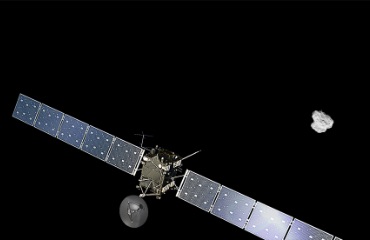
Image of the comet probe “Rosetta”
©Spacecraft: ESA/ATG medialab; Comet image: ESA/Rosetta/NAVCAM
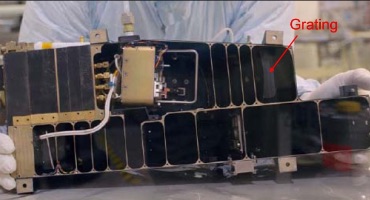
Grating onboard “Alice”
Reference source: S. A. Stern et al., “Alice: The Rosetta Ultraviolet Imaging Spectrograph,” The Rosetta Mission - Space Science Review (2005)
Ever since its establishment in 1819, Jobin Yvon SA, a member of the HORIBA Group since 1997, has been at the forefront of optical science and engineering. It became a leader in the world of spectroscopy, in which light is dispersed according to wavelength. Since 1968, the company has developed and manufactured diffraction gratings for space experiments, contributing to numerous space development projects. Gratings are used not only for spacecraft, but also for R&D in drug design, advanced materials, and other fields.
Reference: Our Gratings in Space
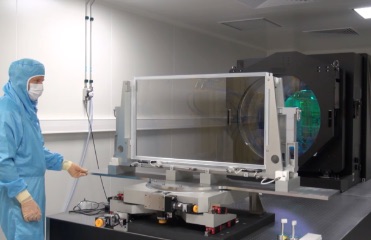
Gratings used for cutting-edge R&D
In September 2006, Dr. David Crisp, Principal Investigator of the Orbiting Carbon Observatory (OCO) at the National Aeronautics and Space Administration’s (NASA) Jet Propulsion Laboratory (JPL), which focuses on the development and operation of unmanned space probes, presented a JPL Award to the Custom Gratings Production Team (HORIBA France SAS). This award honors the development of three outstanding varieties of OCO gratings. HORIBA’s gratings, which boast high precision, high diffraction efficiency, and low scattering, are particularly effective for weak spectrum measurements under extreme conditions, such as those of outer space.
HORIBA also received a NASA Award in 2000. This was the second accolade it received from NASA.
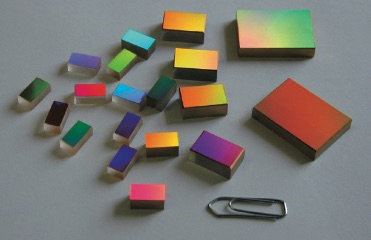
Gratings contribute to space projects
After they were adopted by NASA, HORIBA delivered some of its electrical conductivity sensors to the International Space Station (ISS) for use in the IVGEN system (IntraVenous Fluid GENeration for Exploration Missions).
In the ISS, it is essential to ensure the availability of IV fluids for the initial treatment of any injuries and illnesses suffered by astronauts. However, due to the limited quantity of IV solution that can be transported, a device is needed to manufacture IV solutions from the water used on the ISS. The water used in this device must be highly pure and free of air bubbles, for safety reasons. Consequently, there was a need for some way of detecting the electrical conductivity of minute quantities of pure water with high sensitivity, and visually monitoring for air bubble contamination. HORIBA’s electrical conductivity sensors were launched into space in 2010 for installation in the ISS.
Reference: Electrical Conductivity Sensors Delivered to NASA International Space Station
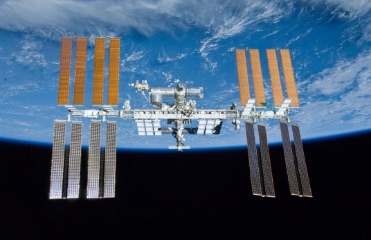
International Space Station ©JAXA/NASA
In August 2011, NASA’s Jupiter probe JUNO was launched from Florida, USA, eventually entering Jupiter’s orbit in July 2016. JUNO is the first planetary probe powered by solar panels to conduct space exploration beyond Jupiter. Its task is to observe Jupiter’s internal structure, atmosphere, and magnetic fields. Two of the eight scientific instruments on board the JUNO are spectrometers, both equipped with HORIBA gratings.
Reference site: HORIBA Jobin Yvon gratings equip two JUNO instruments
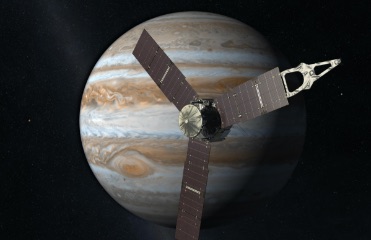
Jupiter prove JUNO ©NASA
In space, water is an extremely precious resource. The Japan Aerospace Exploration Agency (JAXA) is currently conducting a demonstration experiment on a next-generation water reclamation system in the Japanese Experiment Module “Kibo” on the International Space Station (ISS). This next-generation water reclamation system recovers urine from astronauts and condensate from air conditioners, to regenerate it into drinkable water. This particular system, designed for enhanced regeneration rate, power-saving, compact size, and zero consumables, features a HORIBA water quality meter. HORIBA is proud to support this demonstration experiment on the ISS.
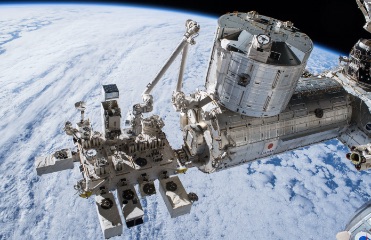
Japanese Experiment Module “Kibo” in the International Space Station ©JAXA/NASA
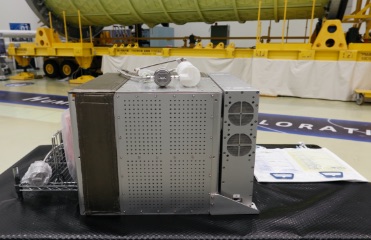
Next-generation water reclamation system ©JAXA
HORIBA TECHNO SERVICE Co., Ltd. (hereinafter HORIBA TECHNO SERVICE), the HORIBA Group company that handles product service and maintenance, is participating in a project to conduct the initial analysis of samples collected from the asteroid Ryugu by JAXA’s Hayabusa2 asteroid explorer. This initial analysis of the samples collected from Ryugu is being undertaken by six teams. As a member of the Chemical Analysis Team, HORIBA TECHNO SERVICE used HORIBA X-ray fluorescence spectrometers and Raman spectrometers to conduct non-destructive, non-contact analysis of the elements and chemical composition of the samples. This work to analyze samples from Ryugu, which promises to clear up some of the mysteries about the origin and evolution of the solar system and life on Earth, is set to begin in June 2021.
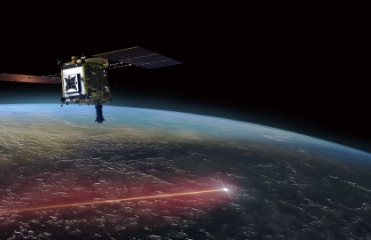
Image of Hayabusa2 dropping its Ryugu sample capsule ©JAXA
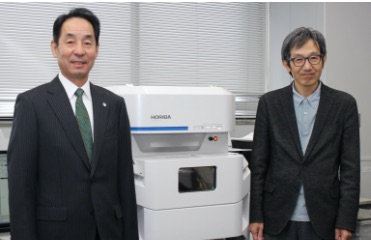
From right to left: Hisayoshi Yurimoto, head of the Chemical Analysis Team, and Hiroo Chihara, president of HORIBA TECHNO SERVICE